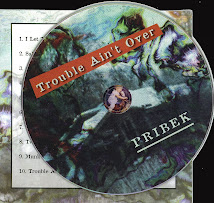Chlorine Destroys Ozone
Mashed from sources by Pat Darnell | July 21, 2013 | Bryan TX
[Picture
LINK]
Observers have noticed since 1974 that certain chemicals send our ozone into chaos. Ozone in the upper atmosphere absorbs harmful ultraviolet rays from the sun. It is a chemical thing. Ozone is a "variant" of oxygen, after all, and susceptible to chemical reaction. In the mid-1980's, ozone awareness was raised in the international consciousness. It was discovered that there was in fact a huge "hole" in the ozone in the layers over the frozen deserts of Antarctica.
What the researchers call “happy time” comes in the afternoon when the tides return and they gather — along with a rotating cadre of graduate students — outside the Winter Palace on an old dock laid out on the lawn to compare notes, gossip and have a snack. "What ever happened to the ozone hole?" they ask.
We Observers then have a larger system to inspect, if we are to find answers elsewhere. One author says the number of possible systems is similar to trying to count every particle of a gas filling a room, "to determine how the particles are distributed." Entropy models proposed are still crude and can not calculate the possibilities in this example. However, even gross observations using entropy detection has produced good results.
Why should we be concerned with a thin, life-sustaining, layer of atmosphere made of rare Oxygen (O3) molecules, anyway? "Intergalactic space lacks both the particles to form us, and the energy to sustain us. It is self-evident that we live in one of the regions that are life friendly. In the multiverse, too, many regions have properties that are incompatible with the existence of observers: They might be entirely empty, or their physical laws preclude any complex structures. (RAPHAEL BOUSSO. October 17, 2008.
LINK) ..." And, a central tenet of thermodynamics is the “second law,” which states that a quantity called entropy cannot decrease.
Whatever Happened to the Ozone Hole?: "The ozone layer lies between about 9.3 and 18.6 miles (15 and 30 kilometers) above Earth's surface. This blanket of ozone, or O3, blocks most of the sun's high-frequency ultraviolet rays. These UV rays can cause skin cancer and cataracts in humans, as well as reproductive problems in fish, crabs, frogs, and even in the single-celled
phytoplankton at the bottom of the ocean food chain.
Ozone is created naturally when oxygen molecules (O2) high in the atmosphere get broken by sunlight into two free oxygen atoms. A free atom can then bond with an unbroken O2 molecule, and ozone is born." (Brian Handwerk. National Geographic News. Published May 5, 2010.
HERE) ... "
For example:
" ... Local ozone reductions approaching 50% in magnitude were observed during the Antarctic spring in the 11–13 and 25–30 km altitude regions over South Pole and McMurdo Stations in 1991. These reductions, at altitudes where depletion has not been observed previously, resulted in a late September total ozone column 10–15% lower than previous years. The added depletion in the lower stratosphere was observed to coincide with penetration into the polar vortex of highly enhanced concentrations of aerosol particles from volcanic activity in 1991. (D. J. Hofmann*, S. J. Oltmans*, J. M. Harris*, S. Solomon†, T. Deshler‡ & B. J. Johnson‡. 24 September 1992. LINK) ... "
"If we had just kept letting CFCs increase at a pretty nominal rate, characteristic of the 1970s, the decreased ozone levels of the hole would have eventually covered the entire planet," said atmospheric physicist Paul Newman of NASA's Goddard Space Flight Center. (Handwerk. May 5, 2010)
'via Blog this'
SUMMARY
Ozone is created naturally when oxygen molecules (O2) high in the atmosphere get broken by sunlight into two free oxygen atoms. A free atom can then bond with an unbroken O2 molecule, and ozone is born.
Ozone is unstable, however, and it's easily broken up by trace elements.
In that rarefied air, ultraviolet light breaks the molecular bonds in CFCs and free chlorine atoms get released. Chlorine then destroys ozone molecules by "stealing" their oxygen atoms.
The disturbing discovery set the stage for an environmental triumph: the Montreal Protocol of 1987.
Now a complete rebound seems imminent. Some scientists project that by 2080 global ozone will return to 1950s levels.
CONCLUSION
No one single person, or entity, has a personal expansive
Body Of Knowledge, BOK available to handle all of these issues by one's self: -- like available to an MD, Climate Specialist, Environmental Scientist, Economist, and Editor, and so on -- all wrapped into ONE ???? NOT LIKELY !!
Each specialty attracts persons from that field. That is the beauty of a Project Body Of Knowledge ... right? Like that synergy thing that Bucky Fuller delineated, that the total is greater than the sum of the parts... Although we here at MooPig Enterprises like to think we can handle any information that explodes onto our screens, the Ozone question is a system of a downer being turned upright.
_____________________________Reference
http://news.nationalgeographic.com/news/2010/05/100505-science-environment-ozone-hole-25-years/
http://environment.nationalgeographic.com/environment/global-warming/?source=NavEnvGlobal
http://news.nationalgeographic.com/news/2009/04/090414-rockets-ozone.html
http://news.nationalgeographic.com/news/2009/08/090827-laughing-gas-ozone.html
http://www.nature.com/nature/index.html
http://www.nature.com/search/executeSearch?sp-c=25&sp-s=&sp-q-1=NATURE%2CNEWS&sp-q=ozone
http://acdb-ext.gsfc.nasa.gov/People/Newman/
http://news.nationalgeographic.com/news/2005/12/1208_051208_ozone_layer.html
http://news.nationalgeographic.com/news/2010/01/100127-ozone-hole-global-warming/
http://www.see.leeds.ac.uk/people/k.carslaw
http://moopigwisdom.blogspot.com/2008/11/life-is-about-capturing-particles-and.html
http://moopigwisdom.blogspot.com/2008/12/follow-carbon.html
http://moopigwisdom.blogspot.com/2009/11/13000-days.html
http://moopigwisdom.blogspot.com/2009/11/co2-on-notice.html
http://moopigwisdom.blogspot.com/2012/10/moopigs-tech-coroner-carbon-dioxide-co2.html
http://aura.gsfc.nasa.gov/outreach/garden_faq.html
*NOAA Climate Monitoring and Diagnostics Laboratory, Boulder, Colorado 80303, USA
†NOAA Aeronomy Laboratory, Boulder, Colorado 80303, USA
‡Department of Atmospheric Science, University of Wyoming, Laramie, Wyoming 80271, USA

















